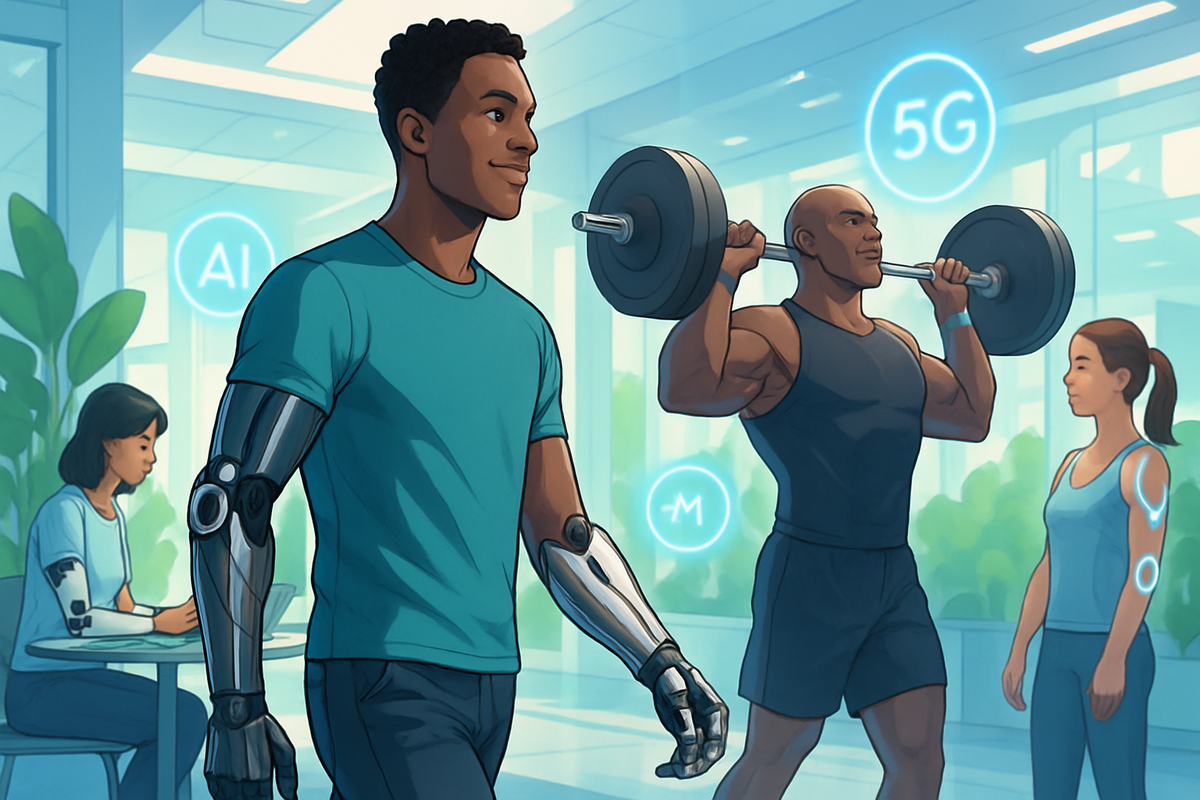Cloud-Connected Bionics: How 5G and AI Are Creating Superhuman Abilities
Unlock the future with cloud-powered bionics, where 5G and AI transform prosthetics from mere replacements into superhuman enhancements. Discover how these advancements redefine what's possible, pushing the boundaries of human potential beyond imagination.

Welcome to the Age of Cloud-Connected Superhumans
Imagine a world where a prosthetic arm responds to your thoughts in real time—where the cloud, 5G, and AI unite to give bionic limbs not just human-like abilities, but superhuman ones. Welcome to 2025, where the next leap in wearable robotics is less about replacing what’s lost and more about augmenting what’s possible.
“The line between man and machine is officially blurry. With 5G and AI, we’re not just restoring mobility—we’re redefining the limits of the human body.”
The Bionic Revolution: Where Cloud Meets Flesh
Today’s most advanced bionic limbs are no longer solitary gadgets—they’re part of a living, cloud-powered ecosystem. Thanks to the explosive growth of 5G connectivity and edge AI, prosthetics can now:
- Process complex motions instantly—using distributed computing that offloads AI tasks to the cloud for lightning-fast feedback.
- Sense and adapt in real time—with next-gen sensors tracking pressure, temperature, and even nerve activity, all beamed through 5G networks.
- Learn and improve continuously—as AI models update from the cloud, personalizing movement and sensation with each use.
Gone are the days of clunky, laggy prosthetics. Instead, we’re seeing agile, intuitive robotic limbs that can grasp a grape, deadlift a barbell, or even play a piano—sometimes better than their meat-and-bone predecessors.
How Does It Work? The Magic of 5G and AI
Let’s peek under the (synthetic) skin:
- Real-Time Sensing: Bionic limbs are packed with sensors—detecting touch, movement, and even EMG signals from your muscles or brain.
- Local & Cloud Processing: Fast, simple actions are handled by onboard chips. But for heavy-duty AI (like predicting your next movement or interpreting complex nerve signals), data is shot up to the cloud via 5G.
- Edge AI for Speed: Time-sensitive decisions (like balancing on uneven ground) are processed at the network edge, close to the user, minimizing lag.
- Continuous Learning: Every user’s unique movements help train smarter algorithms—so your bionic arm learns to anticipate your needs, while the system as a whole gets better for everyone.
Proof of concept? Recent studies have shown that 5G-connected bionic limbs can achieve the ultra-low latency required for natural-feeling control. Some users now report being able to feel shapes and textures through their prosthetics, thanks to cloud-powered neural feedback loops.
Superpowers, Unlocked: From Everyday Life to the Biohacker’s Lab
So what does all this mean for real people? Here’s a taste of today’s (and tomorrow’s) superhuman potential:
- Restoring—then enhancing—mobility for those with limb loss or paralysis. Imagine climbing stairs, dancing, or even running ultra-marathons with cloud-augmented prosthetics.
- Augmented strength and endurance—robotic exoskeletons and limbs that not only match human muscle, but far exceed it. Warehouse workers, athletes, and weekend warriors, rejoice!
- Expanded senses—prosthetics that can detect infrared, ultrasound, or environmental toxins, giving wearers a literal sixth sense.
- Personalized biohacking—users can tune their limbs for peak performance, or experiment with new forms of movement, sensation, and even artistic expression.
“The future isn’t just about leveling the playing field—it’s about rewriting the rules of what a human body can do.”
Ecosystem of the Augmented: Who’s Building This Future?
It takes a (very techy) village to create cloud-connected bionics. Here’s who’s at the table:
- Wearable tech innovators—designing next-gen prosthetics, exosuits, and embedded sensors.
- 5G and cloud providers—delivering the backbone for real-time data transfer and distributed AI.
- Biohacking and health startups—integrating personalized data, supplements, and metabolic tracking for holistic performance.
- Neurotechnology pioneers—developing brain-computer interfaces (BCIs) that let you control devices with a thought (or a raised eyebrow).
The result? A rapidly growing, multidisciplinary ecosystem where medicine, robotics, AI, and lifestyle innovation collide.
Risks, Ethics, and the Road Ahead
No great leap comes without a few philosophical potholes. As we rush toward the superhuman, we must ask:
- Who controls your data? Will cloud-connected limbs be secure from hackers?
- Who gets access? Can everyone benefit, or will augmented abilities widen the gap between haves and have-nots?
- What about identity? If you can upgrade your body like a smartphone, what does it mean to be “human”?
Workshops and research forums are already tackling these dilemmas, aiming to balance empowerment with transparency, security, and inclusivity.
Getting Involved: Your Invitation to the Superhuman Community
If you’re a techie, a biohacker, a patient, or just a curious future-optimist, the doors to this new frontier are wide open. The best part? The real breakthroughs happen when communities share ideas, challenges, and dreams.
Want to go deeper, connect with experts, and have your say? Subscribe for free at Funaix and become a Funaix Insider. Only subscribers can join the conversation in our comments—so don’t miss your chance to help shape the future of human potential. (Did we mention: it’s free, at least for now?)
Ready to join the superhuman revolution? Subscribe now for more stories, smart news, and exclusive perks.




